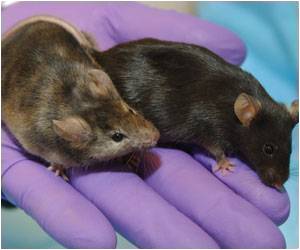Researchers observed videos showing mother rats protecting their pups and matched them to their brain's electrical readings, and found how mother plays a key role in growth of the baby's brain.

Although scientists have known for decades that maternal-infant bonding affects neural development, the NYU Langone team's latest findings are believed to be the first to show — as it is happening — how such natural, early maternal attachment behaviors, including nesting, nursing, and grooming of pups, impact key stages in postnatal brain development.
Researchers say the so-called slow-wave, neural signaling patterns seen during the initial phases of mammalian brain development — between age 12 and 20 days in rats — closely resembled the electrical patterns seen in humans for meditation and conscious and unconscious sleep-wake cycles, and during highly focused attention. These early stages are when permanent neural communication pathways are known to form in the infant brain, and when increasing numbers of nerve axons become sheathed, or myelinated, to speed neural signaling.
According to senior study investigator and neurobiologist Regina Sullivan, PhD, whose previous research in animals showed how maternal interactions influenced gene activity in the infant brain, the latest study offers an even more profound perspective on maternal caregiving.
"Our research shows how in mammals the mother's sensory stimulation helps sculpt and mold the infant's growing brain and helps define the role played by 'nurturing' in healthy brain development, and offers overall greater insight into what constitutes good mothering," says Sullivan, a professor at the NYU School of Medicine and its affiliated Nathan S. Kline Institute for Psychiatric Research. "The study also helps explain how differences in the way mothers nurture their young could account, in part, for the wide variation in infant behavior among animals, including people, with similar backgrounds, or in uniform, tightly knit cultures."
"There are so many factors that go into rearing children," says lead study investigator Emma Sarro, PhD, a postdoctoral research fellow at NYU Langone. "Our findings will help scientists and clinicians better understand the whole-brain implications of quality interactions and bonding between mothers and infants so closely after birth, and how these biological attachment behaviors frame the brain's hard wiring."
Advertisement
Specifically, study results showed that when rat mothers left their pups alone in the nest, infant cortical brain electrical activity, measured as local field potentials, jumped 50 percent to 100 percent, and brain wave patterns became more erratic, or desynchronous. Researchers point out that such periodic desynchronization is key to healthy brain growth and communication across different brain regions.
Advertisement
Similar spikes in rat brain activity of more than 100 percent were observed when mothers naturally groomed their infant pups.
However, these brain surges progressively declined during weaning, as infant pups gained independence from their mothers, leaving the nest and seeking food on their own as they grew past two weeks of age.
Additional experiments with a neural-signaling blocking agent, propranolol, confirmed that maternal effects were controlled in part by secretion of norepinephrine, a key neurotransmitter and hormone involved in most basic brain and body functions, including regulation of heart rate and cognition. Noradrenergic blocking in infant rats mostly dampened all previously observed effects induced by their mothers.
Sullivan says her team next plans similar experiments to look at how behavioral variations by the mother affect infant rat brain development, with the added goal of mapping any differences in brain development. Long term, they say, they hope to develop diagnostic tools and therapies for people whose brains may have been impaired or simply underdeveloped during infancy.
Sarro says more research is also under way to investigate what other, nonadrenergic biological mechanisms might also be involved in controlling maternal sensory stimulation of the infant brain.
Source-Eurekalert









